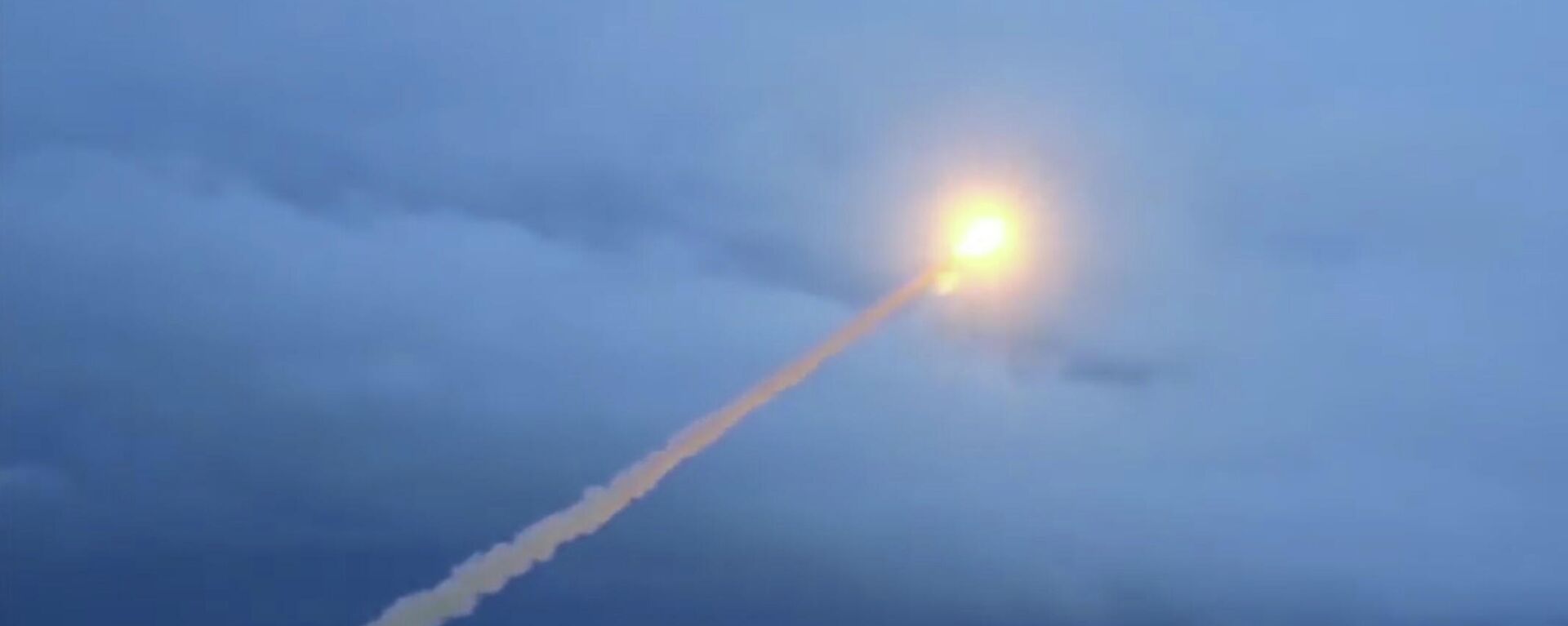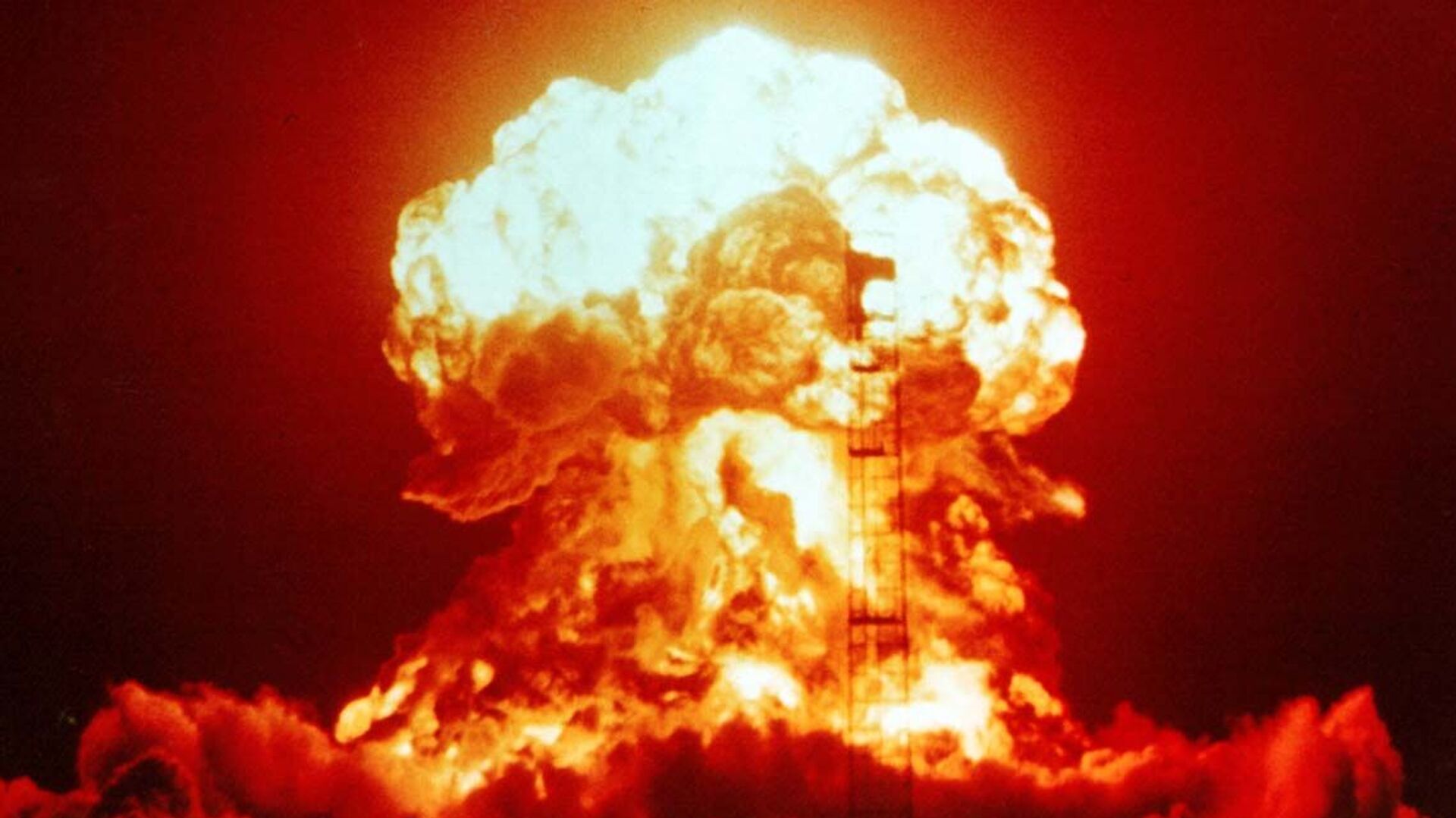https://sputnikglobe.com/20221210/screen-burn-the-most-memorable-nuclear-war-scenes-on-film-and-tv-1105273407.html
Screen Burn: The Most Memorable Nuclear War Scenes on Film and TV
Screen Burn: The Most Memorable Nuclear War Scenes on Film and TV
Sputnik International
With an international conference for a wold without nuclear weapons taking place in Hiroshima — site of the first nuclear bombing by the US on August 6, 1945 ... 10.12.2022, Sputnik International
2022-12-10T12:00+0000
2022-12-10T12:00+0000
2022-12-10T12:00+0000
nuclear warfare
sputnik explains
nuclear war
nuclear weapons
movies
tv
https://cdn1.img.sputnikglobe.com/img/107660/98/1076609864_0:224:1140:865_1920x0_80_0_0_2e6fce757dcd030cd69ed73ee0a68abe.jpg
The Day AfterAt the height of Cold War nuclear tensions in the 1980s, US television network ABC commissioned this famous film about the effects of nuclear war on communities in Kansas and Missouri.The claimactic attack scene shows mass panic as the air raid sirens sounds sound, with the destruction escalating rapidly from a complete loss of power from an initial electro-magnetic pulse attack to huge bursts in the heart of cities, which are reduced to swathes of burning rubble. One of the most striking images from the TV movie was of people and animals — as many missile silos are sited on farmland in the US Midwest — being vaporised in an instant by the thermonuclear fireballs.Threads of DestructionThe plot premise of ABC's The Day After was strikingly similar to the 1966 British BBC production The War Game, directed by Peter Watkins in his trademark pseudo-documentary style. Made on a typically small budget for British TV at the time, the film was nevertheless deemed so shocking and even politically dangerous that the BBC refused to broadcast it.But two decades later, with the Campaign for Nuclear Disarmament (CND) stronger than ever after the deployment of US ground-launched cruise missiles in Britain, the broadcaster commissioned a very similar film — widely renowned as the darkest and most hopeless piece of nuclear fiction ever created.Hollywood H-BombsJames Cameron's 1984 film The Terminator is considered a classic of apocalyptic fiction, about a cyborg and a resistance fighter travelling back through time from a post-nuclear future to battle for mankind's fate. The 1991 sequel, Terminator 2: Judgment Day, had a far greater special effects budget that was to create now-legendary action sequences and the liquid-metal T-1000 terminator.The film's crowd-pleasing took a darker turn when it showed us the fabled 'Judgment Day', when NORAD defense computer Skynet becomes sentient and decides to wipe out the human race as a threat to its existence.The destruction of Los Angeles is told through dream sequence, where heroine Sarah Connor imagines an alternative version of herself playing happily with her young son on a hilltop — before they are graphically incinerated and blasted to smithereens by the nuclear fire.The True Horrors of Nuclear WarUnsurprisingly, the most horrifying and yet moving portrayals of nuclear war on film have been by creators from Japan, the only country to have been bombed with atomic weapons.American-born Jimmy Murakami, who was interned with his Japanese-born parents in a California concentration camp from 1942 to 1945, directed the 1986 animated adaptation of British artist Raymond Briggs' graphic novel When the Wind Blows. The bombing scene, half-way through the film, is both terrifying and heart-breaking as it segues into a flashback of the elderly couple's courtship and marriage.Hiroshima survivor Keiji Nakazawa's manga graphic novel Barefoot Gen unflinchingly portrays the unimaginable horrors of the world's first nuclear attack. The inhuman suffering it inflicted on hundreds of thousands of victims, including children, is depicted graphically in the 1983 animated film.Learning to Love the BombStanley Kubrick's 1964 satirical black comedy Dr Strangelove — subtitled How I Learned to Stop Worrying and Love the Bomb — features many outlandish characters, most of them played by star Peter Sellars.But the film's most famous scene belongs to Western star Slim Pickens as B52 bomber commander Major "King" Kong. Determined to see through his mission despite serious damage to his aircraft, Kong discovers on approach to the nearest target of opportunity that the bomb bay doors will not open. He heads aft to attempt repairs, sitting on top of a huge thermonuclear bomb to do so.The Cowboy-hat wearing pilot succeeds with seconds to spare — thus dooming the world to nuclear Armageddon — but has no time to get climb off the bomb before the doors open and it drops. Waving his hat and whooping like a rodeo rider, Kong rides the bomb down to to ground.The movie closes with a montage of nuclear test blasts over the strains of Vera Lynn's Second World War hit We'll Meet Again.Unholy TrinityTrust surrealist director David Lynch to capture the macabre beauty and awful, chaotic power of a nuclear detonation with his depiction of the July 1945 'Trinity' test in New Mexico, the first ever atom bomb test.The sequence was the centrepiece of the eighth episode of the 2017 revival of his hit 1990 mystery series Twin Peaks.
https://sputnikglobe.com/20221207/nuclear-war-threat-growing-president-putin-warns-1105165159.html
Sputnik International
feedback@sputniknews.com
+74956456601
MIA „Rossiya Segodnya“
2022
James Tweedie
https://cdn1.img.sputnikglobe.com/img/07e4/08/1c/1080307270_0:3:397:400_100x100_80_0_0_7777393b9b18802f2e3c5eaa9cbcc612.png
James Tweedie
https://cdn1.img.sputnikglobe.com/img/07e4/08/1c/1080307270_0:3:397:400_100x100_80_0_0_7777393b9b18802f2e3c5eaa9cbcc612.png
News
en_EN
Sputnik International
feedback@sputniknews.com
+74956456601
MIA „Rossiya Segodnya“
Sputnik International
feedback@sputniknews.com
+74956456601
MIA „Rossiya Segodnya“
James Tweedie
https://cdn1.img.sputnikglobe.com/img/07e4/08/1c/1080307270_0:3:397:400_100x100_80_0_0_7777393b9b18802f2e3c5eaa9cbcc612.png
nuclear weapons, cinema, film, tv, nuclear explosion, hydrogen bomb, atom bomb, nuclear war, nuclear war in movies, nuclear weapons in movies, nuclear war on tv, movies about nuclear war, best movies about nuclear war, best movies about nuclear bomb, nuclear war in the day after, nuclear war in the terminator, is terminator about nuclear war, nuclear explosion in twin peaks,
nuclear weapons, cinema, film, tv, nuclear explosion, hydrogen bomb, atom bomb, nuclear war, nuclear war in movies, nuclear weapons in movies, nuclear war on tv, movies about nuclear war, best movies about nuclear war, best movies about nuclear bomb, nuclear war in the day after, nuclear war in the terminator, is terminator about nuclear war, nuclear explosion in twin peaks,
Screen Burn: The Most Memorable Nuclear War Scenes on Film and TV
With an international conference for a wold without nuclear weapons taking place in Hiroshima — site of the first nuclear bombing by the US on August 6, 1945 — at the weekend, take a look at how nuclear Armageddon has been portrayed on screen.
At the height of Cold War nuclear tensions in the 1980s, US television network ABC commissioned this famous film about the effects of nuclear war on communities in Kansas and Missouri.
The claimactic attack scene shows mass panic as the air raid sirens sounds sound, with the destruction escalating rapidly from a complete loss of power from an initial electro-magnetic pulse attack to huge bursts in the heart of cities, which are reduced to swathes of burning rubble.
One of the most striking images from the TV movie was of people and animals — as many missile silos are sited on farmland in the US Midwest — being vaporised in an instant by the thermonuclear fireballs.
The plot premise of ABC's The Day After was strikingly similar to the 1966 British BBC production The War Game, directed by Peter Watkins in his trademark pseudo-documentary style. Made on a typically small budget for British TV at the time, the film was nevertheless deemed so shocking and even politically dangerous that the BBC refused to broadcast it.
But two decades later, with the Campaign for Nuclear Disarmament (CND) stronger than ever after the deployment of US ground-launched
cruise missiles in Britain, the broadcaster commissioned a very similar film — widely renowned as the darkest and most hopeless piece of nuclear fiction ever created.
James Cameron's 1984 film
The Terminator is considered a classic of apocalyptic fiction, about a cyborg and a resistance fighter travelling back through time from a post-nuclear future to battle for mankind's fate. The 1991 sequel,
Terminator 2: Judgment Day, had a far greater special effects budget that was to create now-legendary action sequences and the liquid-metal T-1000 terminator.
The film's crowd-pleasing took a darker turn when it showed us the fabled 'Judgment Day', when NORAD defense computer
Skynet becomes sentient and decides to wipe out the human race as a threat to its existence.
The destruction of Los Angeles is told through dream sequence, where heroine Sarah Connor imagines an alternative version of herself playing happily with her young son on a hilltop — before they are graphically incinerated and blasted to smithereens by the nuclear fire.
The True Horrors of Nuclear War
Unsurprisingly, the most horrifying and yet moving portrayals of nuclear war on film have been by creators from Japan, the only country to have been bombed with atomic weapons.
American-born Jimmy Murakami, who was interned with his Japanese-born parents in a California concentration camp from 1942 to 1945, directed the 1986 animated adaptation of British artist Raymond Briggs' graphic novel When the Wind Blows. The bombing scene, half-way through the film, is both terrifying and heart-breaking as it segues into a flashback of the elderly couple's courtship and marriage.
Hiroshima
survivor Keiji Nakazawa's
manga graphic novel Barefoot Gen unflinchingly portrays the unimaginable horrors of the world's first nuclear attack. The inhuman suffering it inflicted on hundreds of thousands of victims, including children, is depicted graphically in the 1983 animated film.

7 December 2022, 16:11 GMT
Learning to Love the Bomb
Stanley Kubrick's 1964 satirical black comedy Dr Strangelove — subtitled How I Learned to Stop Worrying and Love the Bomb — features many outlandish characters, most of them played by star Peter Sellars.
But the film's most famous scene belongs to Western star Slim Pickens as B52 bomber commander Major "King" Kong.
Determined to see through his mission despite serious damage to his aircraft, Kong discovers on approach to the nearest target of opportunity that the bomb bay doors will not open. He heads aft to attempt repairs, sitting on top of a huge thermonuclear bomb to do so.
The Cowboy-hat wearing pilot succeeds with seconds to spare — thus dooming the world to nuclear Armageddon — but has no time to get climb off the bomb before the doors open and it drops. Waving his hat and whooping like a rodeo rider, Kong rides the bomb down to to ground.
The movie closes with a montage of
nuclear test blasts over the strains of Vera Lynn's Second World War hit
We'll Meet Again.
Trust surrealist director David Lynch to capture the macabre beauty and awful, chaotic power of a nuclear detonation with his depiction of the July 1945 'Trinity' test in New Mexico, the first ever atom bomb test.
The sequence was the centrepiece of the eighth episode of the 2017 revival of his hit 1990 mystery series Twin Peaks.



